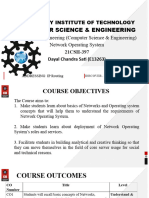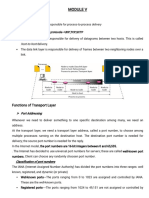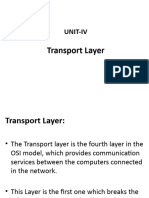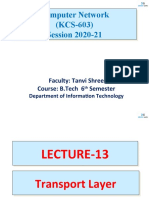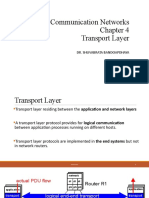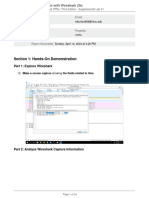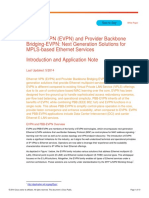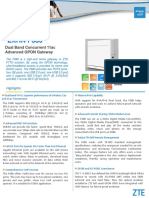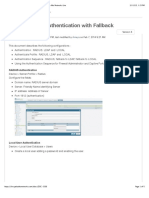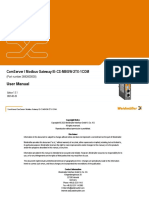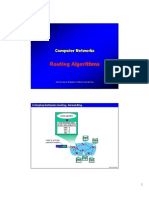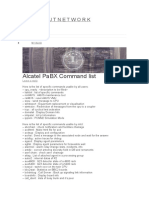0% found this document useful (0 votes)
28 views58 pagesChapter 6 - Transport Layer
Chapter 5 discusses the Transport Layer's functions, including connection management, port addressing, and flow control mechanisms. It explains the differences between connection-oriented (TCP) and connectionless (UDP) transmissions, detailing their features, protocols, and the importance of port numbers for process communication. Additionally, it covers congestion control techniques and algorithms like leaky bucket and token bucket, emphasizing their role in managing network traffic.
Uploaded by
sanziwansCopyright
© © All Rights Reserved
We take content rights seriously. If you suspect this is your content, claim it here.
Available Formats
Download as PDF, TXT or read online on Scribd
0% found this document useful (0 votes)
28 views58 pagesChapter 6 - Transport Layer
Chapter 5 discusses the Transport Layer's functions, including connection management, port addressing, and flow control mechanisms. It explains the differences between connection-oriented (TCP) and connectionless (UDP) transmissions, detailing their features, protocols, and the importance of port numbers for process communication. Additionally, it covers congestion control techniques and algorithms like leaky bucket and token bucket, emphasizing their role in managing network traffic.
Uploaded by
sanziwansCopyright
© © All Rights Reserved
We take content rights seriously. If you suspect this is your content, claim it here.
Available Formats
Download as PDF, TXT or read online on Scribd
/ 58












